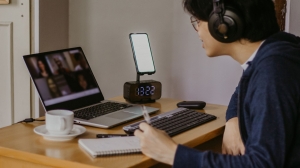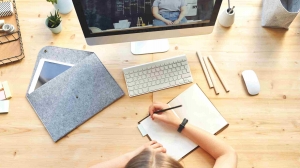Imagine a child, full of energy, struggling to sit still and concentrate on reading a book. Now, imagine that same child, but instead of being told to sit quietly, they are encouraged to move, to engage their body while learning. For children with dyslexia, this approach could make all the difference. Dyslexia, a common learning difference, affects how the brain processes written words, often making traditional reading methods frustrating and ineffective. But what if we could harness the power of movement to unlock a child's learning potential?
Understanding Dyslexia and the Learning Challenges
Dyslexia is not a reflection of a child's intelligence or effort. It's a difference in how their brain processes language, particularly reading and spelling. This can lead to difficulties with decoding words, reading fluently, and comprehending text. Traditional learning methods often focus on silent, stationary reading, which can exacerbate these challenges, leaving children frustrated and defeated.
The Science Behind Movement and Learning
The connection between movement and learning isn't just a theory—it's backed by science. The brain-body connection plays a crucial role in learning and retaining information. Physical movement stimulates brain activity, particularly in areas involved in learning and memory. Studies have shown that when children are physically active, their cognitive functions—like memory, attention, and processing speed—improve significantly. For children with dyslexia, who may struggle with attention and processing, this boost can be incredibly beneficial.
Movement engages multiple senses and reinforces learning in ways that sitting still cannot. For example, kinesthetic learning involves physical activities to understand concepts and can help children with dyslexia internalize information more effectively. When children trace letters in the air, use hand gestures to represent words, or walk while learning new vocabulary, they are not just passively receiving information but actively engaging with it.
Practical Ways to Incorporate Movement in Learning
So, how can we bring movement into the learning environment in a way that supports children with dyslexia?
Active Reading: One technique is to encourage active reading. This could involve having the child read aloud while walking around or using hand gestures to act out words or phrases. This makes reading more engaging and helps with memory retention and comprehension.
Kinesthetic Learning: Another approach is to use kinesthetic learning techniques. For example, you might ask a child to trace letters or words in the air, use building blocks to form words, or even hopscotch their way through the alphabet. These activities transform learning from a static task into a dynamic experience, making it easier for children with dyslexia to grasp and retain information.
Movement Breaks: Movement breaks are another powerful tool. These short, frequent breaks—whether a quick dance session, stretching, or yoga—help refresh the mind and body. Children can return to their tasks with renewed focus and energy by breaking up learning with physical activity.
Success Stories and Case Studies
The impact of movement-based learning can be profound. Take the case of a student who struggled with reading for years despite countless hours of tutoring. It wasn't until her tutor introduced movement into her lessons that she began to make significant progress. The student's confidence and skills soared by incorporating activities like bouncing a ball while practicing spelling or acting out stories as she read them.
In educational settings where movement is integrated into the curriculum, teachers report seeing improvements in reading and comprehension and student engagement and enthusiasm for learning. These success stories highlight the transformative potential of movement for children with dyslexia.
Tips for Parents and Educators
For Parents: You can create a movement-friendly learning environment at home by integrating physical activities into daily routines. Whether practicing spelling while jumping on a trampoline or using a ball to quiz your child on vocabulary words, these activities make learning more interactive and enjoyable.
For Educators: Consider ways to incorporate movement into your lessons in the classroom. This could involve setting up learning stations that require physical activity, using gesture-based reading, or simply allowing students to stand and move around while they work. Small changes in how lessons are delivered can significantly affect how students with dyslexia engage with the material.
Conclusion
Movement is a powerful, yet often overlooked, tool in helping children with dyslexia overcome their learning challenges. Incorporating physical activity into reading and learning strategies can create a more dynamic, engaging, and effective learning experience. With the right approach, children with dyslexia can improve their reading skills and develop a love for learning that will last a lifetime.
At Bravo Reading, we understand the importance of innovative approaches like movement-based learning. Our programs are designed to support children with dyslexia by providing them with the tools and strategies they need to succeed. Whether through multisensory learning techniques or personalized instruction, we are committed to helping every child reach their full potential.
Encourage movement, embrace creativity, and watch your child's learning journey take flight!





